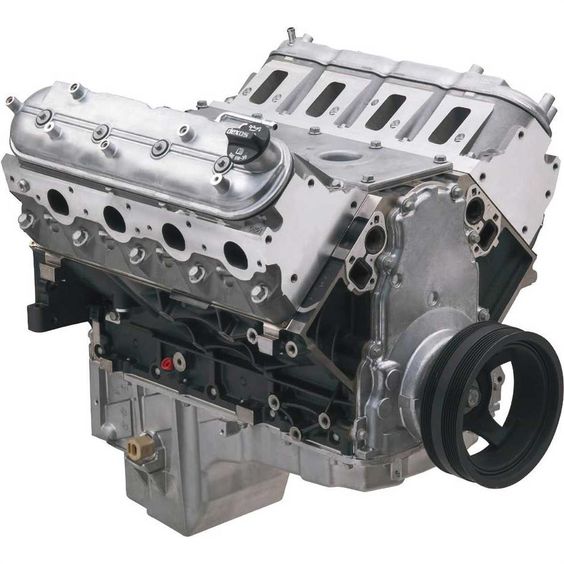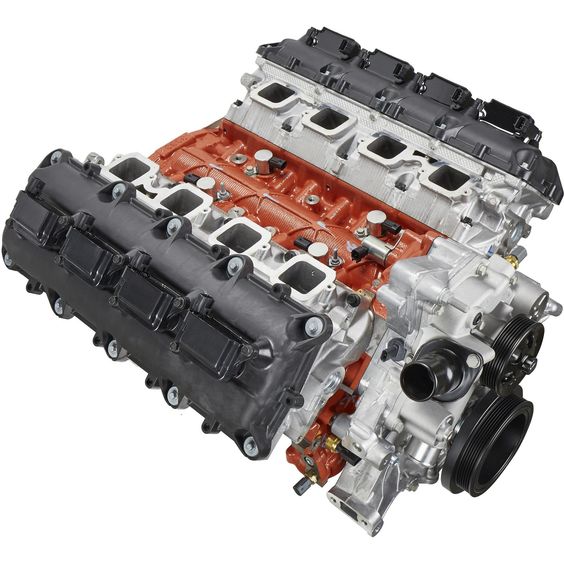For car enthusiasts considering engine repairs or replacements, the terms “short block” and “long block” can be confusing. Both represent incomplete engine assemblies, but their components and applications differ significantly. This guide dives deep into what a long block engine is, exploring its composition, advantages, and when it might be the ideal solution for your vehicle’s needs.
Demystifying the Long Block Engine
A long block engine is a partially assembled internal combustion engine. Unlike a complete engine, it lacks certain external components like the starter motor, alternator, and intake manifold. However, compared to a short block engine, a long block includes the following key parts:

- Engine block: The foundation of the engine, housing the cylinders and coolant passages.
- Crankshaft: The rotating shaft that converts reciprocating motion of the pistons into rotational motion.
- Connecting rods: These connect the pistons to the crankshaft, transmitting force.
- Pistons: Cylindrical components that move within the cylinders, compressing the air-fuel mixture and transmitting force to the crankshaft.
- Cylinder heads: These seal the top of the cylinders and house the valves, spark plugs (in gasoline engines), and other components crucial for combustion.
- Valvetrain: This system, including camshaft, valves, and lifters, controls the intake and exhaust of air and fuel within the engine.
In essence, a long block engine represents the core components responsible for power generation within an engine.
Advantages of Choosing a Long Block Engine
There are several compelling reasons why a engine might be the perfect choice for your engine repair or replacement project:
-
Cost-effective: Long block engines are typically more affordable than purchasing a complete new engine. They offer a cost-effective way to revive a dead engine or significantly boost performance without breaking the bank.
-
Faster turnaround time: Since long blocks are pre-assembled, they often require less time and labor to install compared to rebuilding an existing engine or piecing together components from scratch. This translates to quicker turnaround times for getting your vehicle back on the road.
-
Performance potential: Many engines are designed for performance upgrades. They may feature high-performance pistons, camshafts, or upgraded internal components, offering a significant power boost over your stock engine.
-
Simplified rebuild process: For mechanics or gearheads comfortable rebuilding engines, long block engines provide a solid foundation. They eliminate the need to source and assemble numerous individual components, streamlining the rebuilding process.
Choosing the Right Long Block Engine for Your Needs
With the understanding of a long block engine’s composition and advantages, here are key factors to consider when selecting the right one for your vehicle:

-
Engine compatibility: Ensure the long block engine is compatible with your vehicle’s make, model, and year. Mismatched components can lead to significant fitment issues and hinder performance.
-
Power goals: Are you seeking a stock replacement or a performance upgrade? Choose a long block that aligns with your power goals. Performance-oriented long blocks often feature upgraded components for increased horsepower and torque.
-
Budget: Long block engines range in price depending on the brand, quality, and performance level. Determine your budget and choose a long block that offers the features you need within your financial constraints.
-
Installation considerations: Factor in the cost and complexity of installing the engine. If you plan on tackling the installation yourself, ensure you possess the necessary mechanical skills and tools.
Consult with a reputable mechanic or engine builder to discuss your specific needs and identify the most suitable long block engine for your vehicle.
Beyond the Basics: Additional Considerations for Long Block Purchases
Selecting the right long block engine goes beyond just core components and compatibility. Here are some additional factors to consider:

-
Block Material: Engine blocks are typically constructed from cast iron or aluminum. Cast iron offers superior durability and affordability, while aluminum is lighter and allows for better heat dissipation, potentially enhancing performance.
-
Cylinder Head Material: Similar to engine blocks, cylinder heads can be cast iron or aluminum. Aluminum heads offer weight savings and improved heat transfer, but may be less robust than cast iron heads.
-
Internal Component Quality: The quality of internal components within the long block engine significantly impacts performance, reliability, and longevity. Look for long blocks featuring forged pistons, performance camshafts, and high-quality bearings for optimal results.
-
Warranty: A strong warranty from the long block manufacturer provides peace of mind. Standard warranties typically cover defects in materials and workmanship for a specified period.
-
Brand Reputation: Opt for long block engines from reputable brands known for their quality and performance. Research online reviews and consult with mechanics to understand brand strengths and weaknesses.
Installation and Additional Parts Needed
While a long block engine represents the core components, additional parts are necessary for a complete and functional engine. Here’s a general list:

-
Oil pan: The oil pan houses the engine oil and ensures proper lubrication. Choose an oil pan compatible with your specific long block and vehicle.
-
Intake manifold: This component directs the air-fuel mixture from the air filter and throttle body into the engine cylinders.
-
Exhaust manifold: The exhaust manifold collects exhaust gases from the cylinders and channels them to the exhaust system.
-
Gaskets and seals: Various gaskets and seals are essential for preventing oil leaks and ensuring proper operation. A complete gasket set is typically recommended when installing a long block engine.
-
Engine mounts: Engine mounts secure the engine to the chassis and absorb vibrations. Ensure the engine mounts are compatible with both your long block and vehicle.
-
Fluids: Fresh engine oil, coolant, and potentially power steering fluid will be required upon installation.
Installation complexity varies depending on the vehicle and long block engine. Consulting a professional mechanic for installation is highly recommended, especially for those unfamiliar with engine building or replacement procedures.
The Road to Reviving Your Ride

Understanding long block engines empowers you to make informed decisions regarding engine repair or replacement. Their cost-effectiveness, performance potential, and faster turnaround times make them compelling options for many car enthusiasts. By carefully considering factors like engine compatibility, power goals, budget, and installation requirements, you can select the perfect long block engine to breathe new life into your vehicle.
So, whether you’re a seasoned mechanic tackling a rebuild project or a car owner seeking a cost-effective engine replacement, long block engines offer a viable and potentially powerful solution.



